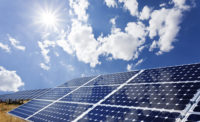The word “decarbonization” is widely used across multiple industries. It encapsulates companies’ goals of reducing the amount of carbon their business operations release into the atmosphere. However, decarbonization is a broad term, and a range of activities and approaches fit under its umbrella.
Capital project teams for refrigerated facilities will benefit by first identifying ways to reduce energy consumption during the building’s operational phase; efficiency improvements not only lower emissions but can save on costs, too. Refrigerated facilities are among the highest energy consumers in the commercial building sector, with the refrigeration equipment itself typically consuming over half of the total energy used facility-wide. If the cost of defrosting is added to that number, the percentage rises to about 75%.
Design for Decarbonization
Because some decisions can be made only during concept development, an experienced general contractor should be brought on board early to help compare scenarios during preconstruction planning. For example, site modeling is the stage at which the team can explore the best way to orient the building on its site to control solar gain and/or improve ventilation.
During building design, the team should examine the power requirements for various equipment options, so that energy-conscious selections can be made. Extra care should be taken when designing the HVAC system, for example, comparing the benefits of a rooftop unit versus an interior unit. Refrigerant selection is especially important—if leaked, refrigerants have a large global warming potential (GWP). In October the Environmental Protection Agency (EPA) finalized its technology transition rule that will limit refrigerants’ global warming potential and it is now prohibited for new chillers to use some refrigerants that were previously commonplace. The emergence of new-generation refrigerants means this is currently a key area for designers’ attention.
Use of sensor technology is becoming a common way to improve energy efficiency. Occupancy sensors can be used to reduce lighting use and/or room temperatures in almost any type of plant, but sensors can bring particularly large efficiency gains to cold facilities. Control systems can monitor and adjust temperatures for individual units or regulate the pressure controls that govern the cycling of a compressor. Sensor-based systems can replace timed-defrost systems, so that defrost cycles happen only when needed. Advanced control systems can help maintain temperature, humidity and ventilation, especially since refrigerated facilities can benefit from having zone-based cooling. Data analytics are another technology-based tool that can improve energy efficiency by revealing energy usage trends that point toward the biggest savings opportunities.
Building envelope considerations are more critical for cold storage facilities than they are for many other types of structures. Higher levels of insulation and specialized gapless doors (especially in large loading dock openings) are the types of details the building team must consider early in the design process.

Renewable Energy Options
Once energy savings are optimized, the team can consider the supply side of the power equation. Localized energy generation, such as distributed generation (where electricity is generated for use on-site rather than being transmitted over long distances from a centralized facility) is growing in popularity. Many renewable energy sources are appropriate for installation onsite, including solar panels, wind turbines, geothermal systems, hydropower sources and biofuels/biomass (which convert waste to energy). Some owners are utilizing natural gas as a “bridging strategy” as they progress toward their goals of transitioning to cleaner energy.
The Solar Energy Industries Association’s most recently available report on U.S. businesses’ adoption of solar energy, “Solar Means Business 2022,” found corporate solar adoption is rapidly expanding, with over half of all commercial solar capacity having been installed since 2020. The report also found that the price to install solar has fallen by 60% in the last decade—although supply chain problems during that time frame affected solar and other renewable energy installers just as they did other aspects of the industry. Experienced contractors are one of the best resources to help companies balance upfront costs versus long-term savings associated with installing renewable energy.
Some refrigerated facilities may be good candidates for combined heat and power (CHP) systems. When power is being produced onsite, the losses that typically result in waste can instead be used in the facility providing process heating, steam or hot water. Although they are big consumers of energy, refrigerated facilities have one advantage: since refrigeration systems produce waste heat, installing an energy recovery system such as a heat exchanger can capture and reuse that heat, such as for heating water.
The uptick in adoption of renewable energy is also taking place at power plants themselves, which means that even using power supplied by the grid can contribute to overall emission reduction. However, “while renewables are preferable to fossil fuel generators from an emissions standpoint, power output from renewable sources depends on variable natural resources, which makes these plants more difficult to control and presents challenges for grid operators,” according to a report from Resources for the Future. Last June, the U.S. Energy Information Administration released data suggesting that two-thirds of North America was at risk of an energy shortfall amidst summertime spikes in demand. This makes it even more critical for building teams to plan for their energy needs. Often, additional investments must be made to augment peaks in demand and shift loads. Backup generators are a common solution, and building teams are becoming creative in designing this type of backup system, maximizing usability and even portability. Battery energy storage systems are another solution.
In addition to helping design power supply and storage systems, general contractors can help identify incentive programs associated with utilities and power usage. Renewable energy solutions often qualify for funding.
Finally, addressing the ease of equipment maintenance—while still in the project planning stage—can save energy in the end. Refrigeration systems must be regularly inspected to check for refrigerant leakage, because if components fail—or even if settings become maladjusted—efficiency (and money) can be lost. Because refrigeration units are upgraded more frequently than many equipment types, it is worth thinking as far ahead as ease of equipment replacement. For cold facilities, in particular, conducting a life-cycle assessment (LCA) can be valuable.
With changes in the industry ranging from regulatory to utility-based to technological, the exact decarbonization approach taken by any given refrigerated facility will be unique. Assembling a preconstruction team that has experienced members and a wide range of expertise will ensure that strategies across board are considered, combined and implemented. These early, collaborative efforts will help owners of cold facilities not only improve their bottom line but contribute to the global effort to lower carbon emissions.




